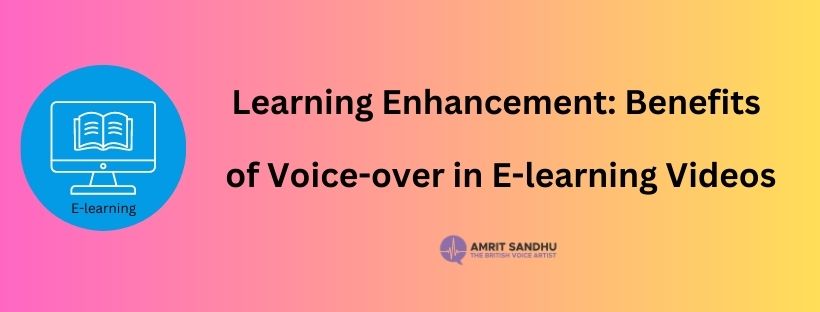E-learning has changed the way we study and take in knowledge in the world of contemporary education. Voice-over narration is a vital tool among the wide range of resources available to e-learning creators. Voice-over in e-learning films can significantly improve the learning process by encouraging greater retention, engagement, and comprehension.
Let’s look at some ten (10) benefits that voice-over can provide in E-learning videos:
Accessibility and Inclusivity
Voice-over has many advantages for students with various needs and abilities. For people who have trouble reading and those who are visually impaired, it offers an accessible learning experience. E-learning is made more accessible and guarantees that a wider range of learners may access and benefit from the curriculum by incorporating auditory information.
Enhanced Clarity and Understanding
Voice-over narration gives the learning process a human touch by helping students through difficult topics and outlining the subject matter in detail. Hearing an authoritative voice helps students absorb the material, making even the most complex subjects simpler to comprehend.
Emotion and Engagement
A professional voice-over can add emotion to the material, increasing its interest and relatability. Voice inflection, emphasis, and intonation all assist learners in relating to the topic more deeply by conveying enthusiasm, empathy, and excitement.
Flexibility and Convenience
It is a hallmark of e-learning that learners can interact with voice-over content at their own convenience and pace. They can rewind, pause, or review as necessary to create a learning experience that is tailored to their particular learning style.
Global Reach
E-learning videos are more accessible to a global audience when they have voice-over narration. Education may cross linguistic and cultural barriers by providing content in a variety of languages or dialects, making it more inclusive and alluring to students worldwide.
Higher Retention Rates
Voice-over narration can increase retention rates by providing both aural and visual input. Multiple sensory presentations help students recall knowledge more successfully, according to studies.
Multisensory Learning
Utilizing voice-over maximizes the benefits of multisensory learning by simultaneously engaging the auditory and visual senses. Through numerous channels of reinforcement and consideration for different learning styles and preferences, this dual input improves information retention.
Personal Connection
Even in digital surroundings, a well-done voice-over creates a sense of connection between the learner and the instructor. Hearing a warm, welcoming voice can aid in establishing a personal connection that replicates the rapport developed in conventional classrooms, assisting students in feeling more at ease and motivated.
Reduced Cognitive Load
By verbally providing information, voice-over narration helps relieve cognitive load and free up learners’ attention so they can concentrate more on grasping the concepts than on interpreting written material. This can be very useful when working with intricate charts, graphs, or technical language.
Storytelling Potential
Storytelling has never been easier than using voice-over. Content that incorporates narratives and stories will be more engaging and memorable. The contextualization of abstract concepts through storytelling has been found to improve retention and comprehension.
Voice-over narration can be strategically added to e-learning videos to enhance the educational experience. By making use of the benefits listed above, educators and instructional designers can develop lessons that not only teach content but also help students develop a stronger bond with it. As the educational landscape changes, utilizing voice-over as a potent tool can improve everyone’s experience of learning by making it more engaging, efficient, and pleasurable.




